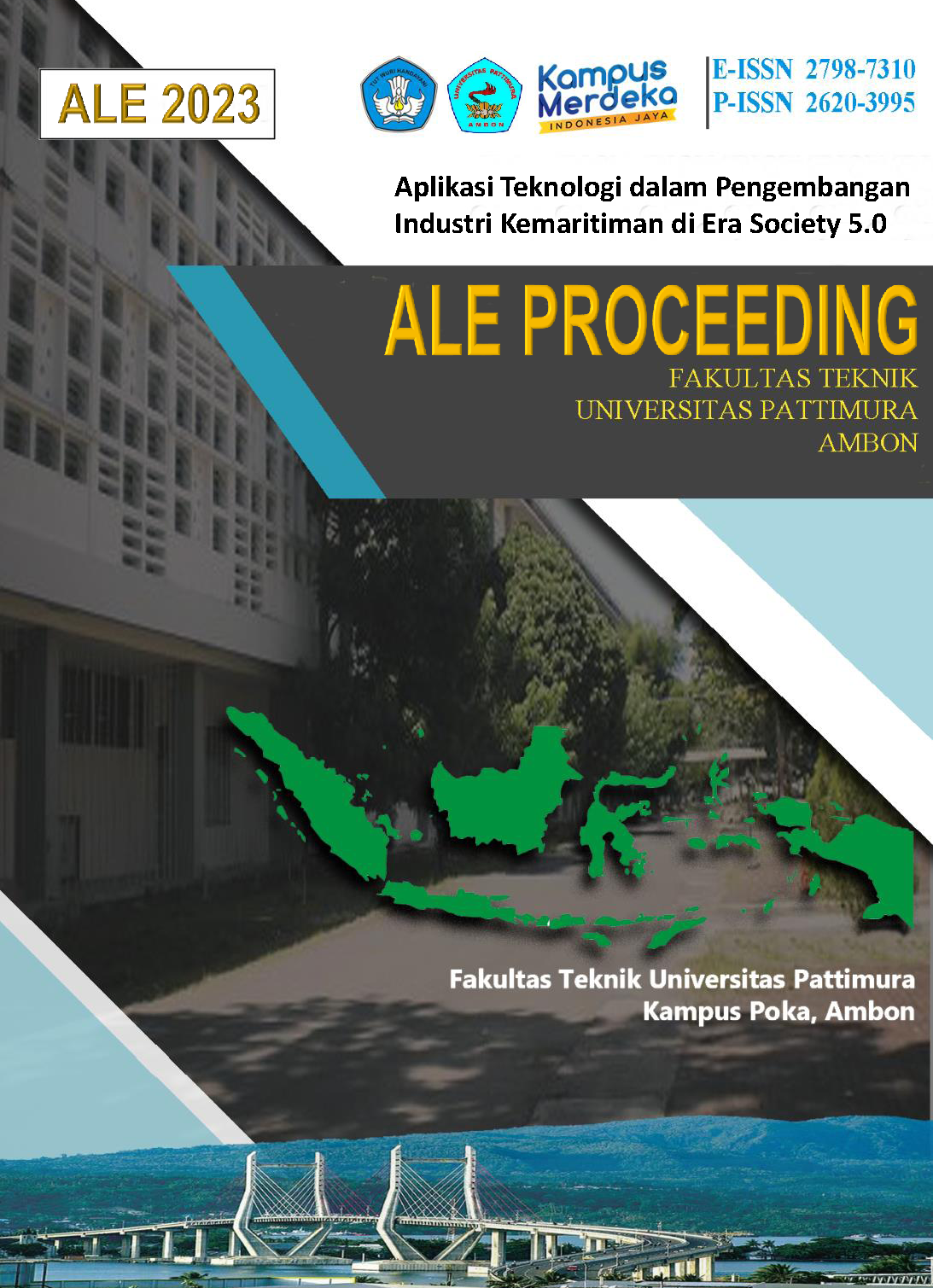SEPARATION OF ETHANOL-WATER AZEOTROPE MIXTURES USING EXTRACTIVE DISTILLATION METHOD
Abstract
Extractive distillation is a specialized distillation process that involves adding an additional component (extractive agent or solvent/entrainer) to the mixture in order to alter the relative volatilities of the components and enable their separation, even when they form azeotropes. This technique is commonly used to separate azeotropic mixtures, such as ethanol-water azeotropes. The ethanol-water azeotrope is a well-known example, where the mixture contains around 95.6 wt% ethanol and 4.4 wt% water. Traditional distillation methods cannot separate these components efficiently due to the azeotropic behavior. However, extractive distillation offers a solution by introducing a third component (entrainer) that forms a ternary azeotrope, which has different properties compared to the binary azeotrope (ethanol-water). This study presents the effect of the operating parameters (e.g., column configuration, pressure, entrainer type) on energy consumption while the purity of ethanol is set to 99.5 wt%. Appropriate entrainers (i.e., glycerol, ethylene glycol) are chosen to extract water from methanol at different compositions. The optimum design of ethanol-water azeotrope separation is obtained by using sensitivity analysis in Aspen Plus simulation. The results indicate the trade-off between solvent and reboiler duty consumption. An advanced comparison study is recommended, including the mixing of both solvents as entrainer.
Downloads
References
[2] K. Ouchida et al., “Integrated sugarcane farming and sugar milling with selective fermentation: A simulation-based approach,” J. Clean. Prod., vol. 236, no. 2019, p. 117521, 2019.
[3] C. C. Yi, W. C. Huang, and I. L. Chien, “Energy-efficient heterogeneous extractive distillation system for the separation of close-boiling cyclohexane/cyclohexene mixture,” J. Taiwan Inst. Chem. Eng., vol. 87, pp. 26–35, 2018.
[4] W. L. Luyben, “Pressure-Swing Distillation for Minimum- and Maximum-Boiling Homogeneous Azeotropes,” Ind. Eng. Chem. Res., vol. 51, no. 33, pp. 10881–10886, Aug. 2012.
[5] S. B. Dai, H. Y. Lee, and C. L. Chen, “Design and Economic Evaluation for the Production of Ethyl Lactate via Reactive Distillation Combined with Various Separation Configurations,” Ind. Eng. Chem. Res., vol. 58, no. 15, pp. 6121–6132, 2019.
[6] L. M. Vane, “Review of pervaporation and vapor permeation process factors affecting the removal of water from industrial solvents,” J. Chem. Technol. Biotechnol., vol. 95, no. 3, pp. 495–512, 2020.
[7] X. Gao et al., “Application of Dimethyl Carbonate Assisted Chemical Looping Technology in the Separation of the Ethylene Glycol and 1,2-Butanediol Mixture and Coproduction of 1,2-Butene Carbonate,” Ind. & Eng. Chem. Res., vol. 60, no. 5, pp. 2249–2264, Jan. 2021.
[8] M. I. Taipabu, F. J. Novita, H. Y. Lee, and R. Handogo, “Improvement of Cyclohexene/Cyclohexane separation process design via chemical looping technology using reactive distillation and thermally coupled configurations,” Chem. Eng. Process. - Process Intensif., vol. 168, no. August, 2021.
[9] X. Gao and X. Geng, “Application of the Chemical-Looping Concept for Azoetrope Separation,” Engineering, vol. 7, no. 1, pp. 84–93, 2021.
[10] W. Shen, H. Benyounes, and V. Gerbaud, “Extractive distillation: Recent advances in operation strategies,” Rev. Chem. Eng., vol. 31, no. 1, pp. 13–26, 2015.
[11] R. A. Tusso-Pinzón, A. Castillo-Landero, L. G. Matallana-Pérez, and A. Jiménez-Gutiérrez, “Intensified synthesis for ethyl lactate production including economic, sustainability and inherent safety criteria,” Chem. Eng. Process. - Process Intensif., vol. 154, no. July, p. 108041, 2020.
[12] I. D. Gil, L. C. García, and G. Rodríguez, “Simulation of ethanol extractive distillation with mixed glycols as separating agent,” Brazilian J. Chem. Eng., vol. 31, no. 1, pp. 259–270, 2014.
[13] M. I. Taipabu, K. Viswanathan, H. T. Chen, and W. Wu, “Green solvent production of ethyl lactate via process intensification,” J. Taiwan Inst. Chem. Eng., vol. 146, no. March, p. 104876, 2023.
[14] R. A. Tusso-pinzón, A. Castillo-landero, L. G. Matallana-pérez, and A. Jiménez-gutiérrez, “Chemical Engineering & Processing : Process Intensification Intensified synthesis for ethyl lactate production including economic , sustainability and inherent safety criteria,” Chem. Eng. Process. Process Intensif., vol. 154, no. June, p. 108041, 2020.
[15] P. GarciÌa-Herreros, J. M. GoÌmez, I. D. Gil, and G. RodriÌguez, “Optimization of the design and operation of an extractive distillation system for the production of fuel grade ethanol using glycerol as entrainer,” Ind. Eng. Chem. Res., vol. 50, no. 7, pp. 3977–3985, 2011.
[16] M. I. Taipabu, K. Viswanathan, W. Wu, R. Handogo, A. Mualim, and H. Huda, “Process Intensification New improvement of amine-based CO 2 capture processes using heat integration and optimization,” Chem. Eng. Process. - Process Intensif., vol. 193, no. September, p. 109532, 2023.
Copyright (c) 2023 Muhammad Ikhsan Taipabu, Wei Wu, Karthickeyan Viswanathana, Nikmans Hattu, Ervina Rumpakwakra, Micky Kololu

This work is licensed under a Creative Commons Attribution-ShareAlike 4.0 International License.
An author who publishes in the ALE Proceeding agrees to the following terms:
- Author retains the copyright and grants ALE Proceeding the right of first publication of the work simultaneously licensed under the Creative Commons Attribution-ShareAlike 4.0 License that allows others to share the work with an acknowledgment of the work's authorship and initial publication in this journal.
- Author is able to enter into separate, additional contractual arrangements for the non-exclusive distribution of the journal's published version of the work (e.g., post it to an institutional repository or publish it in a book) with the acknowledgment of its initial publication in this journal.
- Author is permitted and encouraged to post his/her work online (e.g., in institutional repositories or on their website) prior to and during the submission process, as it can lead to productive exchanges, as well as earlier and greater citation of the published work (See The Effect of Open Access).
Read more about the Creative Commons Attribution-ShareAlike 4.0 Licence here: https://creativecommons.org/licenses/by-sa/4.0/.






